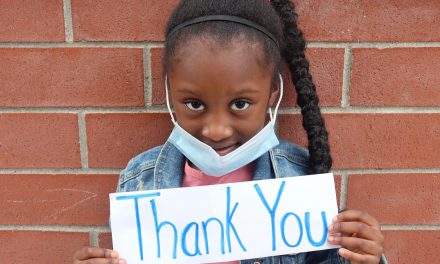Homelessness, deemed a public health crisis, is only a crisis because we continuously fail to treat the problem at its source. Severe stigmas surrounding homelessness suggest that a person living on the street is there of their own accord, asking for handouts to repair the damage they brought upon themselves through poor decision making. Coffee mugs and cardboard signs begging for spare change and blessings are met with disdain and worry that any charity will be spent frivolously, despite a growling stomach or sole-less shoe.
To “solve” homelessness, we construct emergency shelters and donate socks, toiletries, and cans of food. In urban areas like Kansas City and St. Louis, recent efforts have housed homeless populations in hotel rooms among continued negotiations and concerns. However, these short-term solutions only treat the symptoms of homelessness, not the root of the issue.
While a roof and warm bed may offer relief during cold months, it does nothing to address other factors which contribute to homelessness: joblessness and financial instability, food insecurity, lack of transportation, lack of access to health care, physical and mental health concerns, among others. Offering a short-term solution to one facet of the whole issue does more harm than help as it places the burden of responsibility on those struggling to figure out how to fix the rest and shames them for not having done so already.
The unique challenge is that homelessness is transgenerational. Children and youth raised homeless or in poverty often struggle to establish themselves as financially independent adults with stable housing, thus continuing the cycle as they grow up and attempt to raise their own families. Putting the responsibility of solving homelessness on the individuals experiencing it also places blame on children raised in it and incapable of escaping it alone. To truly solve homelessness, we must destigmatize the idea of handouts and personal failure and instead recognize that radical support including increased public funding, improved health equity, and expansion of community resources are necessary.
How Does the Cycle of Homelessness Continue?
Homelessness is affected and perpetuated by several factors: lack of affordable and accessible housing, food insecurity, transportation deserts or lack of a vehicle, and job loss or financial instability. While none of these concerns are new, the COVID-19 pandemic and onslaught of job loss, economic stress, and adults leaving the workforce to care for family has certainly exacerbated these factors.
Any of these challenges can negatively impact a person’s physical and mental health, and combined, they create an endless cycle of needing something that can’t be physically obtained for one reason or another. A person experiencing homelessness, especially someone with children, may have to sacrifice what little funds they have to meet more urgent needs, such as sacrificing health care or shelter for a quick meal. Failing to address other needs, especially over prolonged periods of time, worsens health problems as well as decreases the likelihood of being able to break the cycle of homelessness and poverty.
The problem isn’t a lack of housing, but a lack of affordable and accessible housing. Since 2000, rent prices have increased as well as the number of people who need low-income housing. Cost-burdened households, those who spend more than 50% of their income on housing, raised from 2.1 million to 11.4 million between 2008 and 2014 following the 2008 housing market crash. In rural areas, almost one of every four renters is cost burdened. Despite this, mortgage and rental requirements have also increased. Nearly half of all mortgages go to borrowers with credit scores upwards of 750, compared with 2001 when more than two thirds of mortgages went to borrowers below 750. Higher credit scores, incomes, and more are needed to afford housing, yet even moderate-income households are struggling to keep up, let alone those below the federal poverty threshold.
To even obtain a place to live, someone needs sufficient income, credit history, among other things depending on the specific rental or purchasing criteria. To have an income one must have a job, to have a job one must have reliable transportation to and from their place of work, to be able to work and afford transportation one must have even the free time to be away from home – which is unfortunately not a reality for many single parents and why they are at increased risk of homelessness. Even providing necessities for oneself and especially one’s family requires multiple steps. As for those who do not have access to or support for these multiple layers of need, the cycle becomes too overwhelming and tangled to escape.
Finland’s Possible Solution
In a radical experiment, Finland attempted – and succeeded – to solve homelessness by simply providing housing first, a concept introduced in the 1980s by Canadian psychologist Sam Tsemberis. Through its Housing First program, Finland began eradicating homelessness by offering homes without preconditions to people in need. In an interview highlighting the Housing First project’s success in Finland, Juha Kaakinen summarized the project’s goal to prioritize housing as a human right. Kaakinen is the CEO of Finland’s largest housing nonprofit, the Y-Foundation, and one of the architects of Finland’s national Housing First plan. “You are not required to solve your problems or get sober, for example, to get a permanent home. And then, when you have this home, you can get support to solve your issues.”
Finland’s approach to solving homelessness is successful because it is driven by unity. “What has been crucial in Finland is that there has been a political understanding and political consensus: this is a national problem that we should solve together,” Kaakinen said. Since 2008, several governments and coalitions have partnered to deliver programs and resources aiding people transitioning out of homelessness. Housing First provides service centers where people can go to request help. An assessment is made to determine needs, such as rehabilitation and detoxification for substance users, and then they are provided housing as well as connections to community resources and services for any other needs. Temporary shelters and existing structures were renovated and converted into independent housing with onsite staff for support.
Not only does following in Finland’s footsteps provide a safe starting space for those experiencing homelessness to begin addressing other needs, it also eases the cost of homelessness on taxpayers. Despite arguments that solving homelessness carries a large price tag, Finland found that keeping people homeless was more expensive due to use of public services including emergency health services, calls to police, and justice system expenses for criminalizing homeless populations. The Housing First program and its related services showed great savings compared with the prior cost of homelessness on the public.
Solving Homelessness Requires a Reckoning
To solve homelessness, we must be willing to admit there is a problem and acknowledge the scale of it. Anyone is vulnerable to becoming homeless but the populations most at risk are those already facing disparities in social determinants of health in rural areas. Black and Hispanic families and children, especially families with single parents, and those struggling with substance use and mental health issues are most vulnerable to homelessness and poverty. Children raised homeless are more prone to substance use, dangerous and risky behavior, and family conflicts resulting in school problems, running away, entering the foster care system, or becoming a victim of human trafficking.
Solving homelessness begins with protecting our most vulnerable and prioritizing the most severely in need. Finland has proven that stable housing is the first step and can be accomplished by assessing the existing infrastructures available and accommodating them for those who need them most. Sustainable housing solutions need to consider the affordability and accessibility of housing. But solutions don’t end with addressing gaps in housing – where there is homelessness, there is also gaps in access to food, health care, and transportation. Communities need to assess these gaps and determine what solutions can be made with existing community resources and supplemented by public funding.
For instance, the Missouri Rural Health Association (MRHA) helps rural Missouri communities establish HealthTran, a community-driven transportation service connecting existing community vehicles and volunteer drivers with people needing rides to and from health and wellness appointments. To help address health care access gaps, the Health Care Collaborative (HCC) of Rural Missouri holds annual Project Connect events in Lafayette and Eastern Jackson Counties providing free health services, vouchers, insurance assistance, and more to those in need. Area food pantries have been integral to meeting the needs of those who are food insecure. And organizations, like the Missouri Valley Community Action Agency, have long been activated to fight the good fight to eradicate poverty. They provide utility assistance, housing support, and other safety nets to support those in need.
Helpful Resources
For information about where to access support for basic needs and preparing for the workforce, visit the Missouri Resource Guide. To find food pantries, food banks, school meal programs for students, diaper banks, and more, visit the Missouri Service Navigator. To see a full list of public programs available for those in need in Missouri, visit https://labor.mo.gov/DES/Claims/public_programs.








